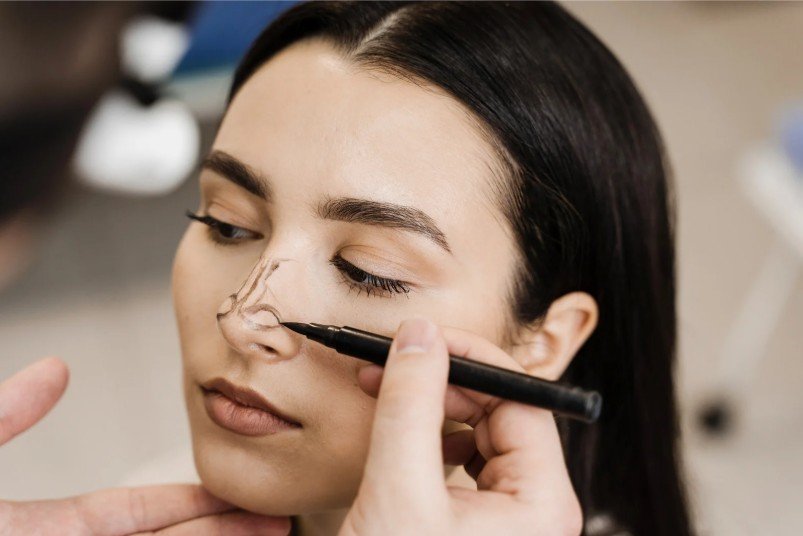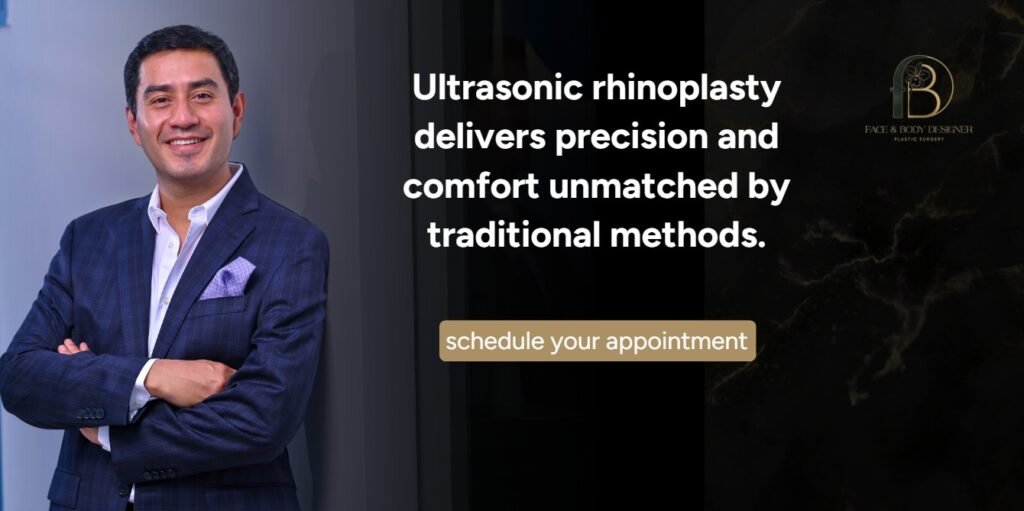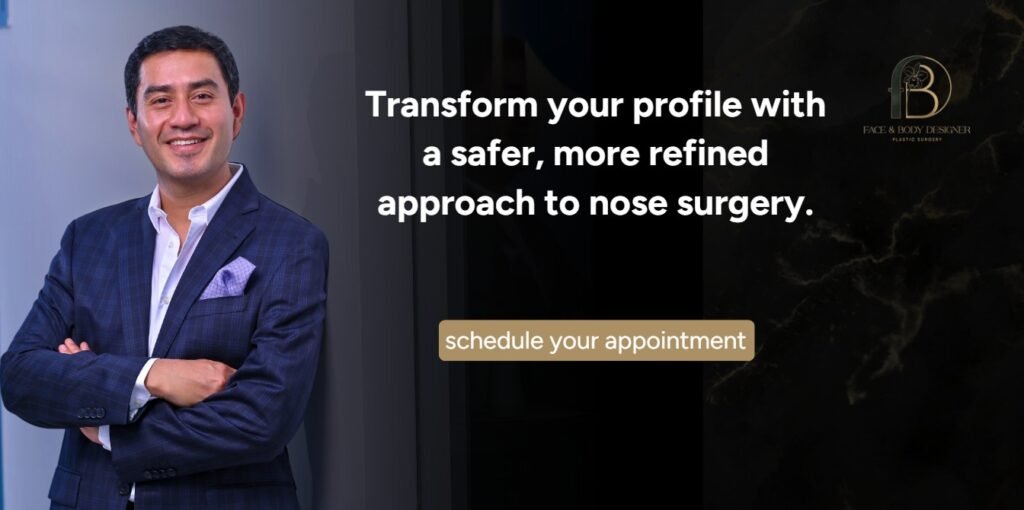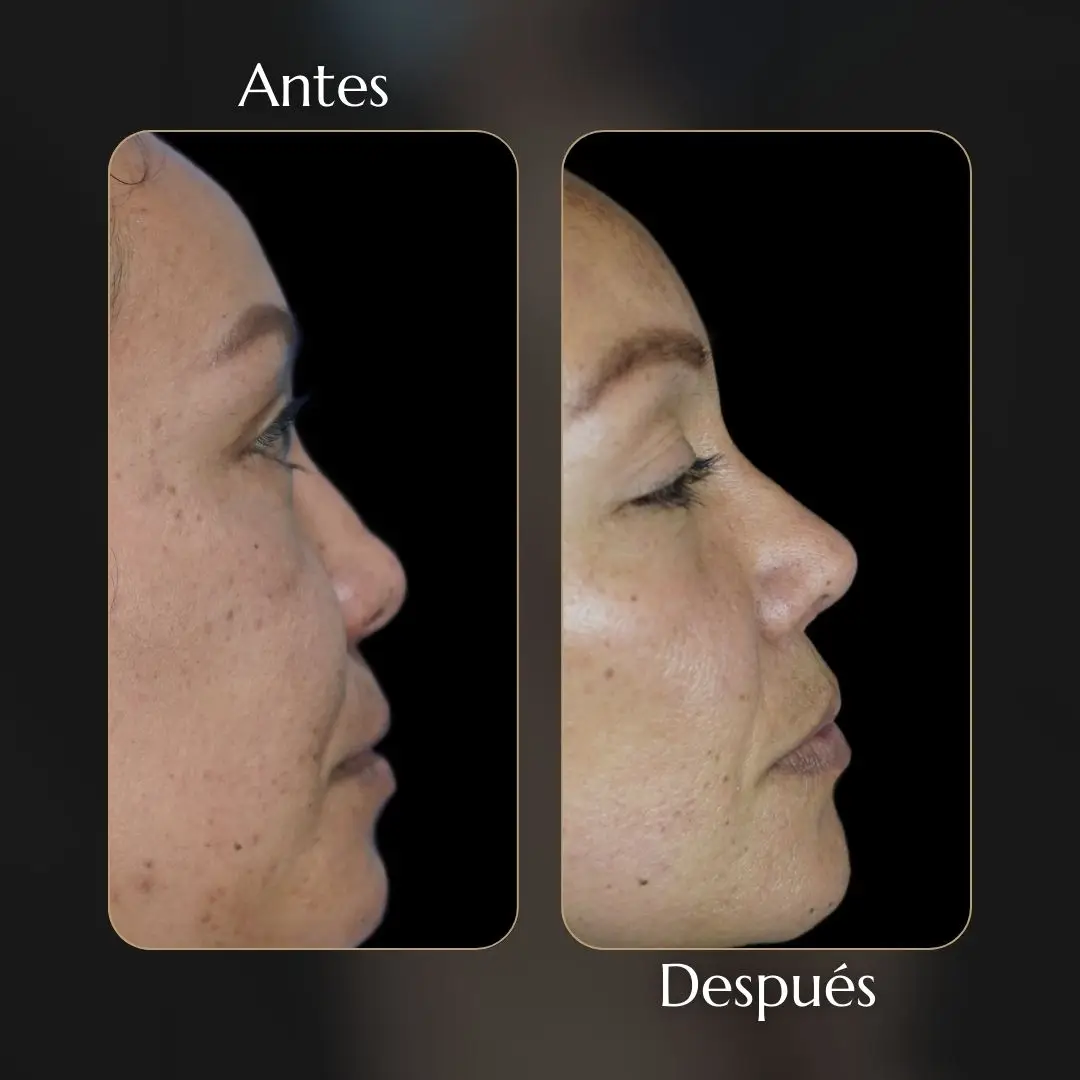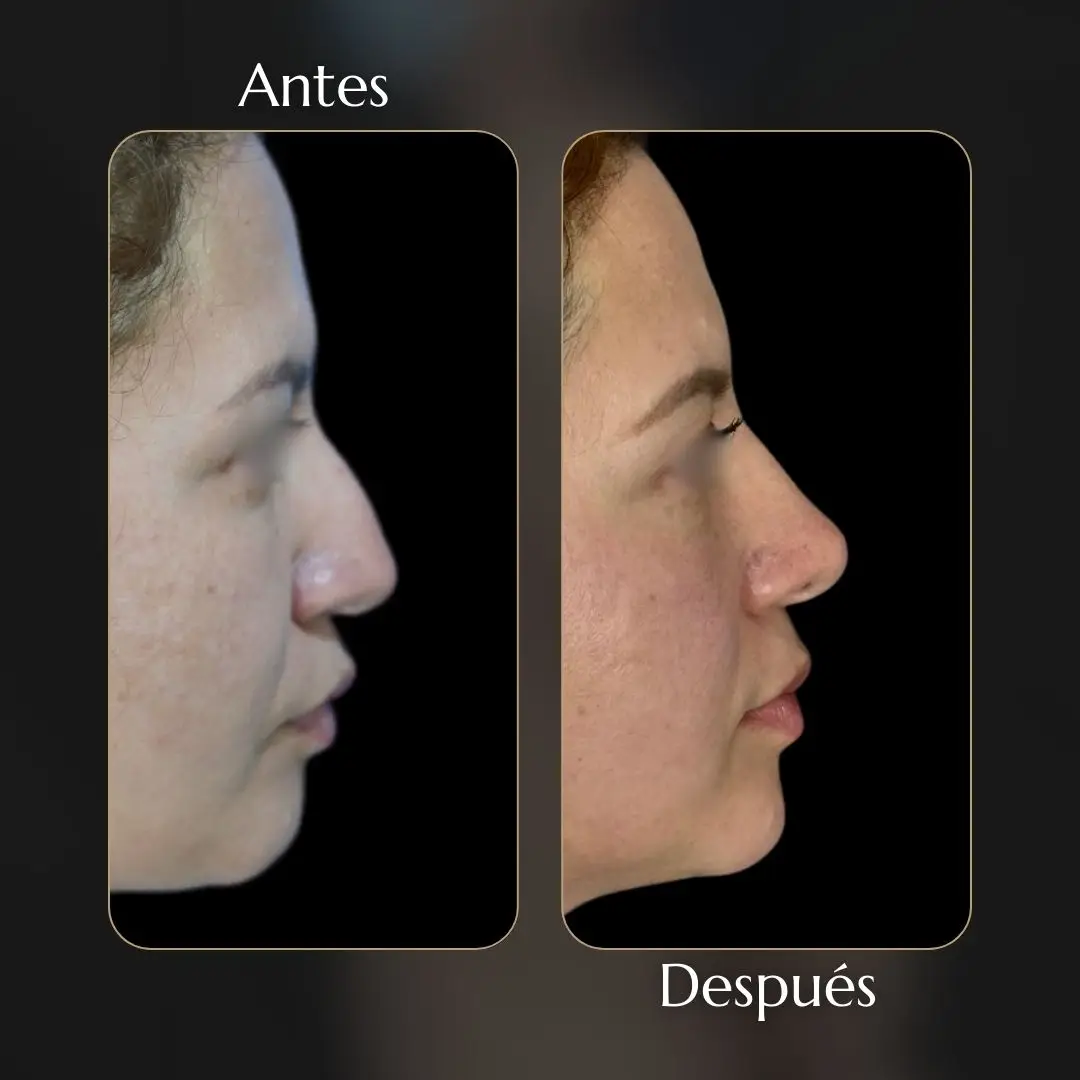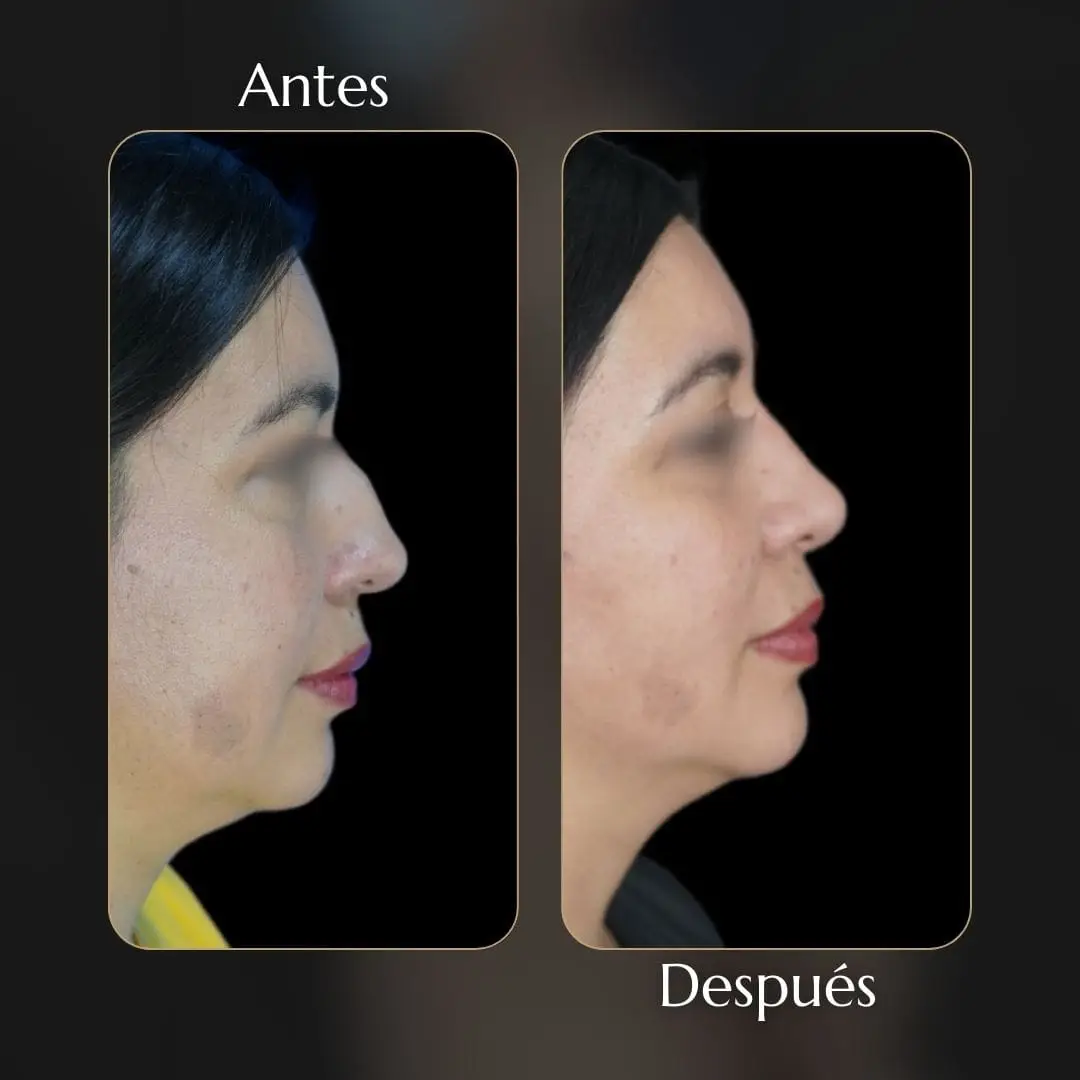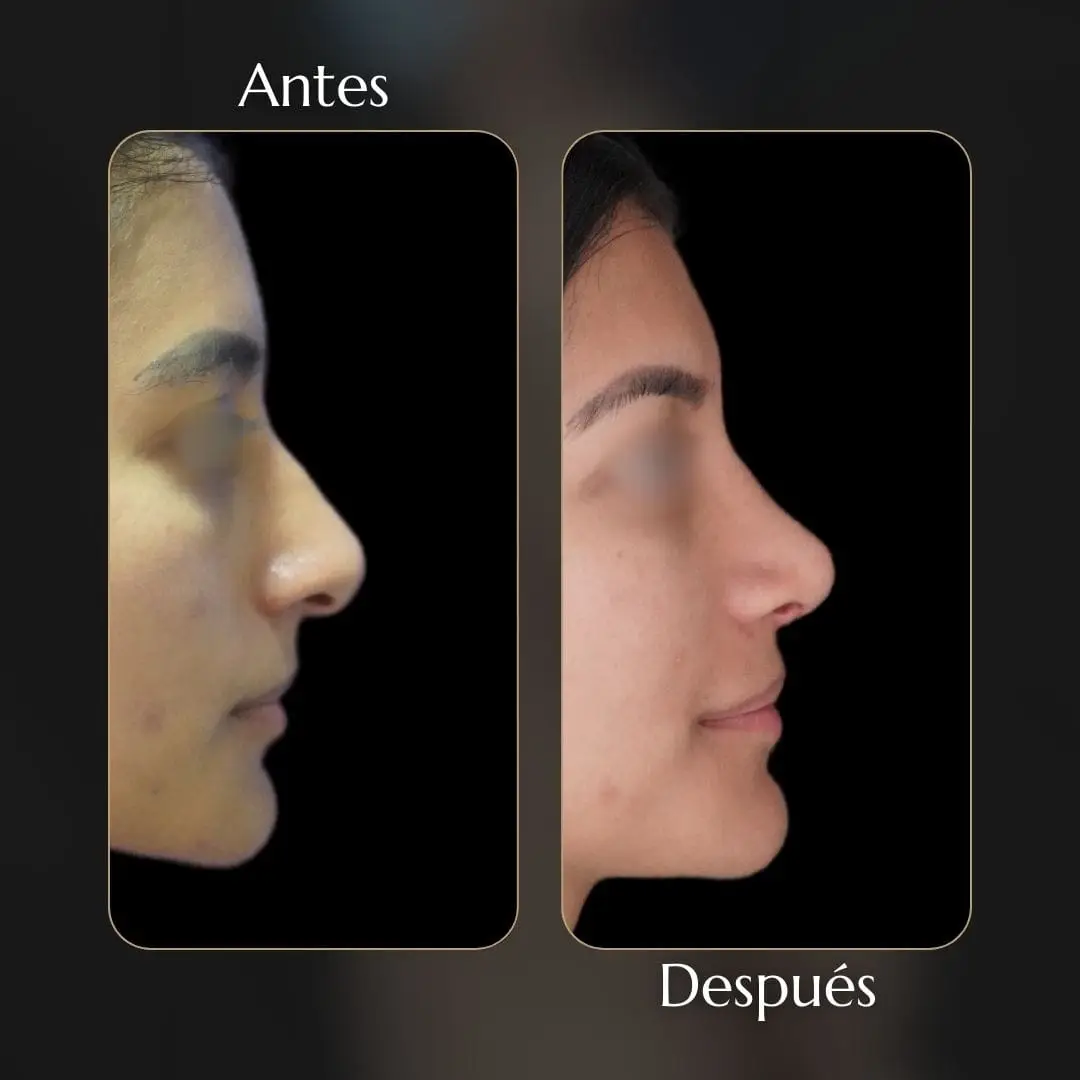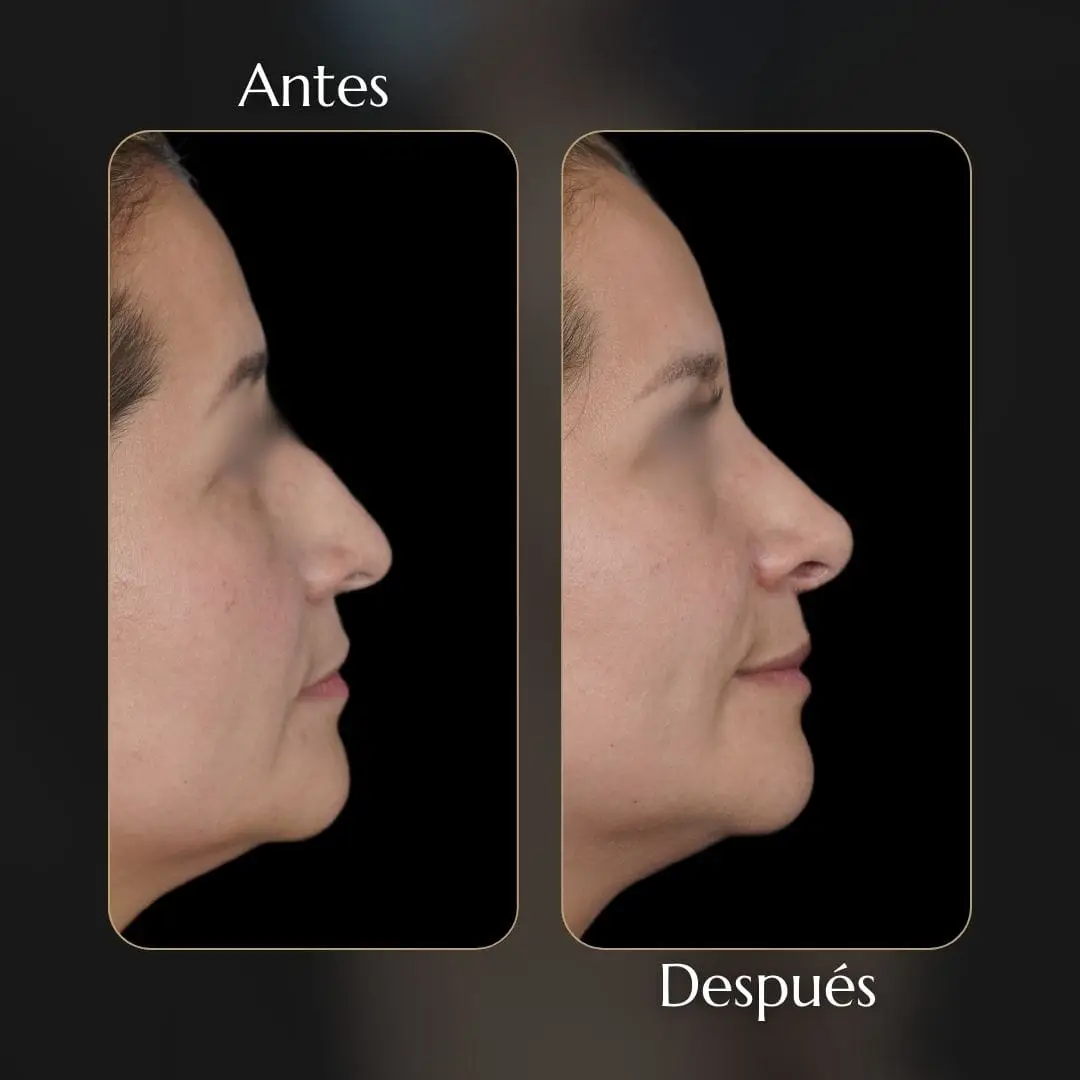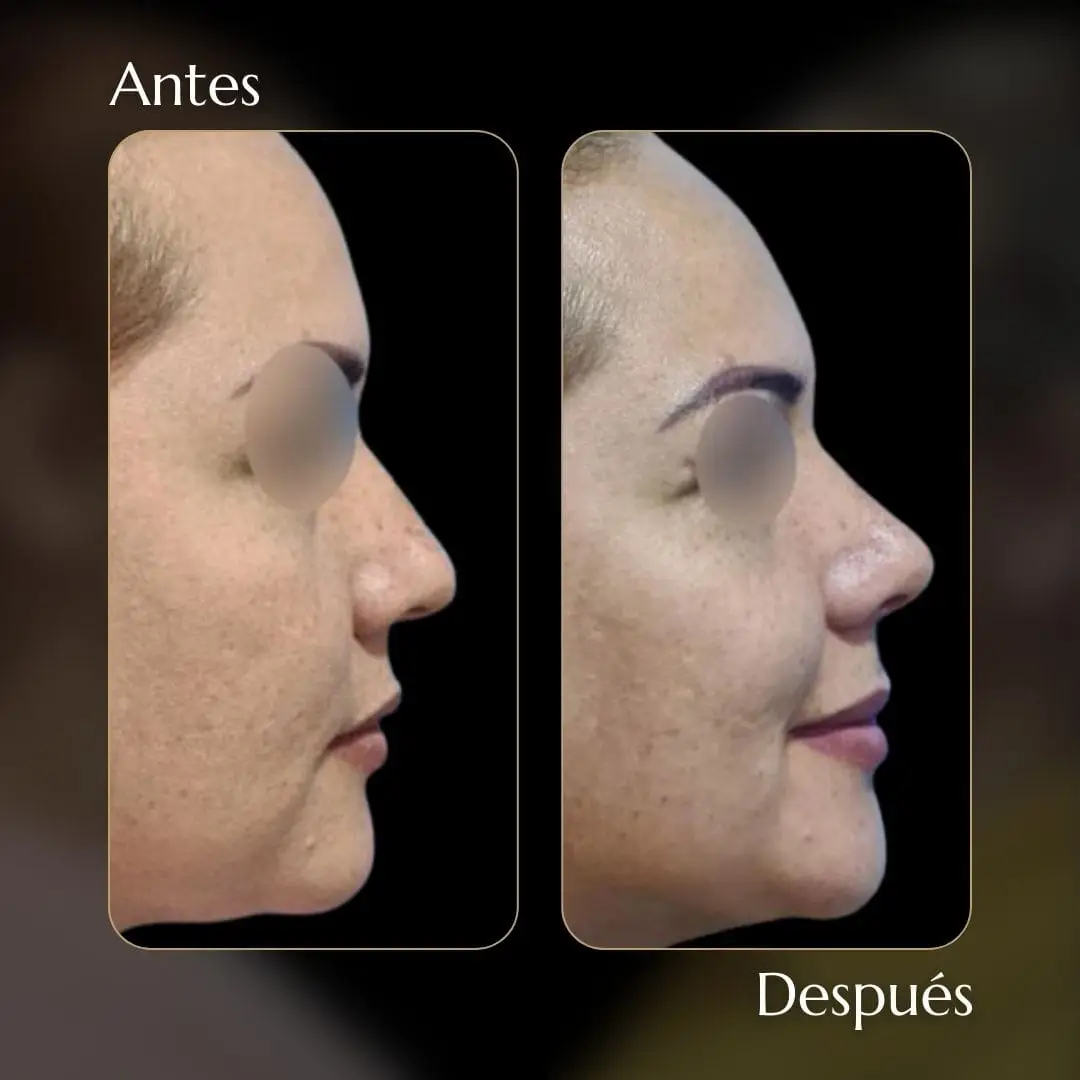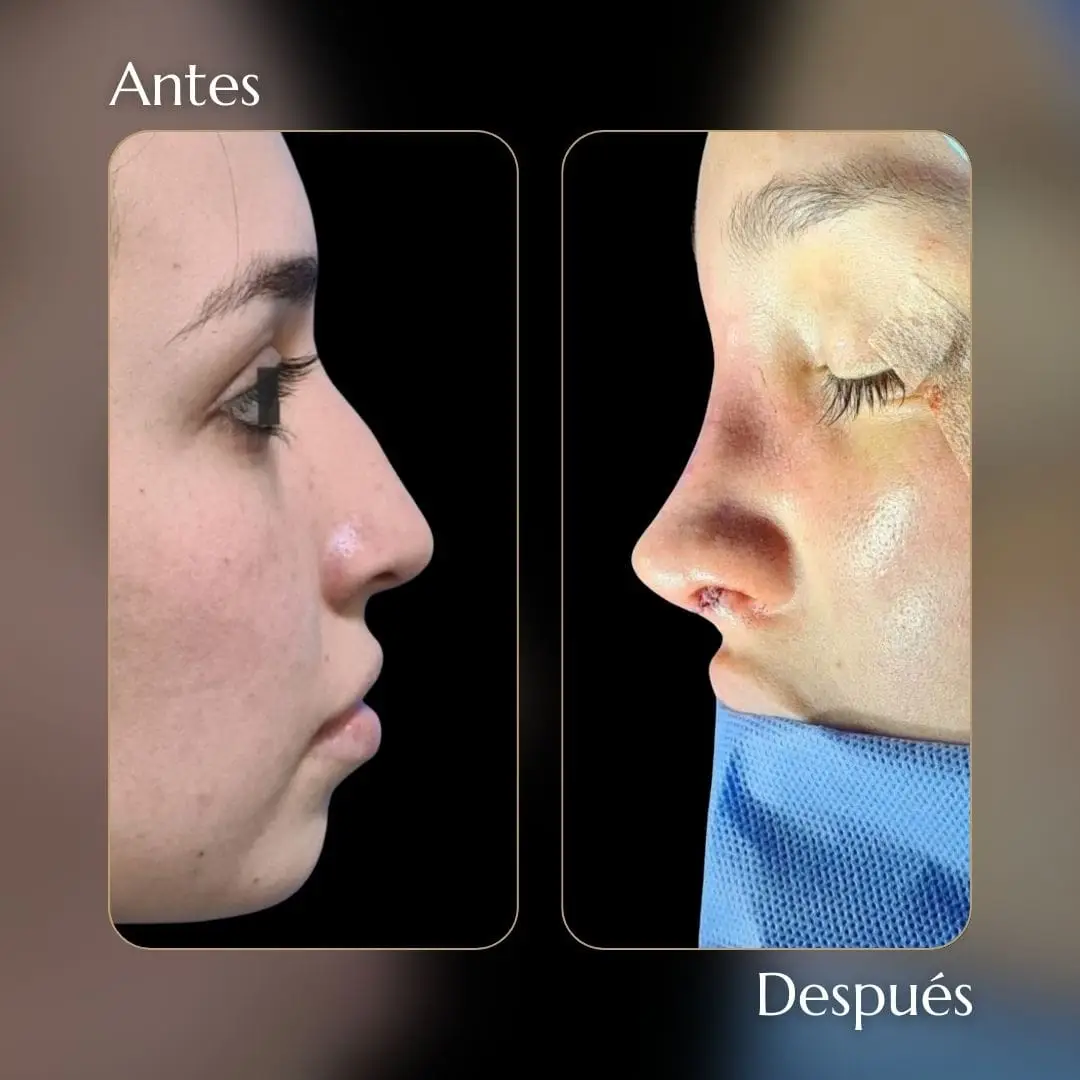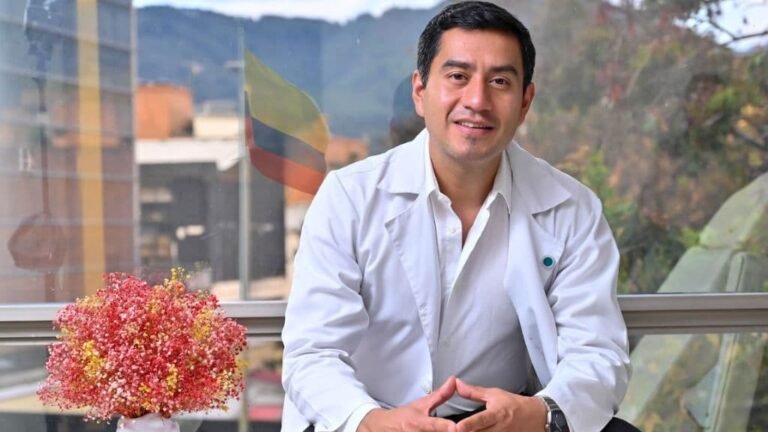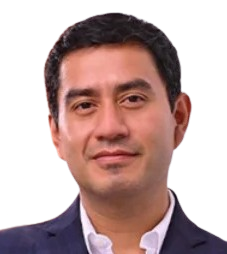As a plastic surgeon with extensive experience in facial and nasal procedures, I have seen how innovation continues to reshape the field of aesthetic surgery. One of the most significant advancements I now offer in my practice is ultrasonic rhinoplasty—a modern, highly precise technique that is transforming the way we approach nose surgery.
Unlike traditional methods that involve manual bone fracturing, ultrasonic rhinoplasty uses high-frequency vibrations to gently sculpt the nasal bones, significantly reducing trauma, swelling, and recovery time. This approach not only offers more predictable and natural-looking results, but also enhances the safety and comfort of the entire surgical process.
In this article, I will walk you through everything you need to know about ultrasonic rhinoplasty: how it works, what makes it different, its advantages, and why patients from around the world are choosing Colombia—and my care—for this next-generation nasal procedure.
Tabla de contenidos
What Is Ultrasonic Rhinoplasty and Why Is It Revolutionizing Nasal Surgery?
If you’ve ever considered nose surgery but felt concerned about pain, swelling, or long recovery times, you’re not alone. As a specialist in facial procedures, I’ve seen a major shift in how we approach rhinoplasty—and it all starts with a new, more refined technique: ultrasonic rhinoplasty.
This approach is changing the game. It allows me to sculpt the nasal bones with unmatched precision, drastically reducing trauma to the surrounding tissue. The result? A safer, more controlled surgery with a smoother, faster recovery—and results that look naturally yours.
A Modern Approach to Nose Surgery
Ultrasonic rhinoplasty is an advanced surgical technique that uses ultrasonic energy—high-frequency sound waves—to reshape the bones of the nose without breaking them. Instead of using traditional tools like chisels or hammers, I use a specially designed ultrasonic device that allows me to make incredibly precise adjustments, minimizing bleeding and tissue damage.
This technology enables me to refine the nasal structure with exceptional control, preserving soft tissues, blood vessels, and cartilage in the process. It’s especially useful in patients who require fine-tuned changes or have delicate nasal anatomy.
How Is It Different from Traditional Rhinoplasty?
One of the biggest concerns patients have about nose surgery is the bruising, swelling, and discomfort they may experience afterward. With ultrasonic rhinoplasty, those concerns are greatly reduced.
Here’s how this technique compares to traditional rhinoplasty:
- No bone fractures: Instead of breaking bones manually, I sculpt them gently with ultrasonic waves.
- Minimal trauma: Soft tissues remain largely undisturbed, reducing post-op bruising.
- Greater accuracy: Ideal for achieving balance and symmetry in even the most complex cases.
- Faster recovery: Most of my patients feel ready to return to daily activities sooner than expected.
As a surgeon, the level of precision I gain with this technique allows for more consistent results and greater safety throughout the procedure.
Why Is This Technique Gaining Global Attention?
More and more patients—especially from abroad—are choosing ultrasonic rhinoplasty not only for the results it offers, but also for the overall experience. The reduced swelling and shorter downtime make it easier to plan around travel schedules, which is a huge advantage for my international patients.
In my practice, I’ve welcomed people from different countries who seek a nose refinement that complements their features without looking “overdone.” With ultrasonic technology, I can deliver that level of artistry while making the entire process smoother and more predictable.
Who Is Ultrasonic Rhinoplasty Ideal For?
This technique is perfect for individuals who:
- Want natural-looking results.
- Are undergoing rhinoplasty for the first time or seeking a revision.
- Have thin or delicate nasal skin and need a precise, tissue-sparing approach.
- Prefer a quicker, less uncomfortable recovery process.
Whether you’re local or traveling from abroad, ultrasonic rhinoplasty offers a refined and modern solution to nasal enhancement—with outcomes that align with your unique facial structure.
Benefits of Ultrasonic Rhinoplasty: A New Era in Aesthetic Nose Surgery
One of the most frequent questions I receive from my patients—especially those traveling from abroad—is: What makes ultrasonic rhinoplasty better than the traditional technique? The answer lies in the combination of advanced technology, surgical precision, and an improved patient experience.
Thanks to ultrasonic rhinoplasty, I can now offer highly refined results with fewer complications and a smoother recovery process. Here are the key benefits that are setting this technique apart in modern aesthetic surgery.
| Beneficio | Descripción |
|---|---|
| Minimal Bruising and Swelling | Because this procedure avoids the need for manual bone fracturing, the surrounding soft tissues, blood vessels, and cartilage remain mostly untouched. This leads to significantly less bruising and inflammation after surgery. Many of my patients are surprised by how quickly they feel comfortable and how subtle the post-operative signs are—especially compared to what they’ve seen with conventional rhinoplasty. |
| Greater Precision, Better Results | The ultrasonic device I use gives me an exceptional level of control when sculpting the nasal bones. This allows for millimetric adjustments, which is crucial for achieving facial harmony and natural results. Whether it’s a subtle refinement or a more complex reshaping, the technology ensures that every movement is controlled, accurate, and tailored to the unique anatomy of each patient. |
| Customization for Every Case | Every nose is different, and so are each patient’s goals. One of the things I appreciate most about ultrasonic rhinoplasty is its versatility. I can adapt the technique to treat a wide range of cases—from subtle contouring to complex asymmetries—while preserving the integrity of the nasal structure. This level of personalization is essential for creating results that look natural and age beautifully over time. |
| Shorter and More Comfortable Recovery | Thanks to the minimally invasive nature of the procedure, recovery time is significantly reduced. Most of my patients return to light daily activities within a few days, and bruising tends to resolve faster than with traditional methods. For international patients, this means a shorter stay in Colombia and a more convenient post-operative experience. |
| Long-Term Stability of Results | Beyond aesthetics and comfort, ultrasonic rhinoplasty offers another crucial advantage: long-term structural stability. Because the bones are sculpted with precision instead of fractured, the healing process is more predictable, and the result tends to remain stable over the years. This is especially important for patients who want consistent, natural results without the risk of unexpected changes over time. |
| Ideal for Primary and Secondary Rhinoplasty | This technique is not only effective for first-time rhinoplasty patients, it’s also highly recommended for revision cases. In my experience, ultrasonic technology is a powerful tool for correcting asymmetries or imperfections from previous surgeries, without adding further trauma to the nasal tissues. |
As a surgeon, offering ultrasonic rhinoplasty has allowed me to raise the standard of care I provide. It’s a technique that respects the natural anatomy, reduces recovery time, and delivers precise, harmonious results—something my patients deeply value, especially those who travel to Colombia in search of both safety and excellence.
Who Is a Good Candidate for Ultrasonic Rhinoplasty?
Not every nose—or patient—is the same. That’s why the first step before considering ultrasonic rhinoplasty is a thorough and personalized evaluation. During my consultations, I carefully assess the bone structure, skin thickness, and overall facial harmony to determine whether this technique is the most suitable option.
There are several important factors I consider:
- Strong bone structure: Ultrasonic tools work best on patients whose nasal structure can be reshaped without compromising stability.
- Skin quality: While this technique is ideal for both thick and thin skin types, the approach may vary depending on skin elasticity and healing tendencies.
- Clear expectations: I take the time to understand each patient’s goals—whether they’re looking for subtle refinement, improved symmetry, or correction from a previous surgery.
In all cases, I ensure that the result is balanced and respects the individual’s facial identity.
One of the greatest strengths of ultrasonic rhinoplasty is its ability to produce natural-looking changes. Patients who want to enhance their nose without losing their unique features often find this technique to be the perfect solution.
This is especially true for patients from abroad who value subtle, elegant outcomes over overly dramatic transformations.
Candidates for ultrasonic rhinoplasty must be:
- In good general health
- Over 16 years of age (with facial growth completed)
- Non-smokers or willing to stop smoking during recovery
I also consider emotional readiness and the patient’s understanding of what the surgery can realistically achieve. My priority is always to ensure safety and satisfaction with long-term, stable results.
What to Expect During and After the Procedure
Understanding the full process helps patients feel more at ease—especially when they are traveling from another country. That’s why I take a personalized, step-by-step approach, providing clear guidance before, during, and after surgery.
Initial Consultation: Your Journey Starts with a Conversation
Our first meeting—whether in-person or virtual—focuses on understanding your goals and evaluating your facial anatomy. I will perform a detailed facial analysis and explain whether ultrasonic rhinoplasty is the most appropriate method for your case.
My goal is to create a surgical plan tailored to your needs, combining medical precision with aesthetic sensitivity.
Pre-operative Planning and Digital Simulation
Before the surgery, I often use digital simulation tools to help you visualize the expected outcome. While no simulation is 100% exact, it’s a valuable resource to align expectations and explore the potential of the procedure.
I also provide you with detailed pre-operative instructions to ensure you are fully prepared for the day of surgery.
How the Surgery Works: Step-by-Step Overview
Here is what the procedure typically looks like:
- Anesthesia: The surgery is performed under general anesthesia for maximum comfort and safety.
- Incisions: Most cases are done with a closed technique, meaning the incisions are hidden inside the nostrils.
- Ultrasonic reshaping: I use the ultrasonic device to gently sculpt the nasal bones, refine the bridge, and correct any irregularities with exceptional precision.
- Soft tissue adjustments: If needed, I will refine the tip or correct internal structures to improve both aesthetics and breathing.
- Closure and splinting: The incisions are closed, and a nasal splint is placed to support the new shape.
Post-Operative Timeline: What to Expect
Recovery varies slightly from patient to patient, but here is a general timeline:
- Days 1–3: Mild swelling and minimal discomfort, managed with medication and cold compresses.
- Day 7: The nasal cast is removed. Most patients are surprised by how natural they already look at this point.
- Weeks 2–4: Bruising fades, swelling continues to decrease.
- Months 1–3: Definition improves, and results begin to emerge.
Pain Management, Follow-ups, and Travel
Discomfort is usually mild and well-managed with prescription pain relievers during the first few days. For my international patients, I provide detailed post-op instructions, virtual check-ins, and support throughout your recovery—even after you return home.
Many of my patients from abroad plan for a 7 to 10-day stay in Bogotá, which is usually sufficient for surgery, initial recovery, and follow-up before flying back.
Choosing ultrasonic rhinoplasty means choosing a modern, patient-centered experience—where every step is designed to ensure safety, comfort, and results you’ll feel proud of.
Ultrasonic Rhinoplasty vs Traditional Rhinoplasty: Which One Should You Choose?
Choosing the right surgical technique is a key part of achieving results that feel natural, balanced, and long-lasting. Many patients who come to my practice, especially from abroad have heard of ultrasonic rhinoplasty but are unsure how it compares to traditional methods. Let me explain the differences based on what I’ve seen in my surgical practice.
A Clear Comparison Between Two Techniques
Here’s a simple breakdown of how ultrasonic rhinoplasty compares to traditional rhinoplasty based on core aspects of the procedure:
| Feature | Ultrasonic Rhinoplasty | Traditional Rhinoplasty |
|---|---|---|
| Bone Reshaping | Ultrasonic vibrations | Manual tools (chisels, rasps) |
| Recovery Time | Shorter | Longer |
| Swelling/Bruising | Less | More |
| Surgical Precision | High | Moderate |
As you can see, ultrasonic technology brings important advantages in terms of accuracy, patient comfort, and healing speed. It’s especially useful for refining bone structure without causing unnecessary trauma.
Are There Cases Where Traditional Rhinoplasty Is Still Necessary?
Yes. While I use ultrasonic rhinoplasty in the vast majority of my procedures, there are some cases—particularly those involving complex cartilage reconstruction or severe internal deformities—where a traditional approach may still be appropriate.
The key is to choose the technique that best fits your specific anatomy and aesthetic goals. That’s why I always perform a comprehensive assessment before recommending any surgical plan.
Why More Patients—and Surgeons—Prefer the Ultrasonic Approach
From a surgeon’s perspective, the precision and control provided by ultrasonic instruments simply can’t be matched by manual tools. And from a patient’s point of view, the benefits are even clearer:
- Faster recovery
- Minimal discomfort
- Natural-looking outcomes
- Lower risk of complications
For these reasons, ultrasonic rhinoplasty has quickly become the preferred technique in modern aesthetic nasal surgery—for both primary and revision cases.
Ultrasonic Rhinoplasty Before and After
Why Colombia Is Becoming a Top Destination for Ultrasonic Rhinoplasty
Over the past decade, Colombia has positioned itself as a global leader in plastic surgery, attracting patients from the U.S., Canada, Europe, and across Latin America. As someone trained at the Universidad Nacional de Colombia—one of the most prestigious medical schools in the region—I’ve seen firsthand the quality and dedication of our surgical community.
A Leading Hub for Medical Tourism in Latin America
Colombia offers a unique combination of high medical standards, state-of-the-art technology, and personalized patient care. This has placed us at the forefront of medical tourism in Latin America, particularly in specialties like aesthetic surgery.
Patients come here not only for the quality of the results, but also for the warmth, safety, and affordability of the experience.
World-Class Training and Surgical Expertise
Our training programs are rigorous and based on international standards. At the Universidad Nacional, I received comprehensive education in reconstructive and aesthetic surgery, which I have continued to refine through advanced techniques like ultrasonic rhinoplasty.
In my practice, I combine this technical training with years of hands-on experience in facial and body procedures, ensuring every patient receives world-class care.
Affordability Without Compromising Quality
One of the main reasons international patients choose Colombia is cost-effectiveness. The same procedure that might cost significantly more in the U.S. or Europe can be performed here with equal or higher standards, but at a much more accessible price.
And with lower costs of recovery, accommodation, and travel, many patients find that their entire medical trip is not only more affordable—but also more enjoyable.
Safe, Supportive Experience for International Patients
I work with patients from various countries and understand the logistics involved in planning surgery abroad. That’s why I offer:
- Virtual consultations and follow-ups
- Guidance with travel and accommodation
- Clear pre- and post-operative instructions in English
- A clinic that follows strict international safety protocols
Bogotá, where I’m based, is a growing medical hub known for its excellent healthcare infrastructure, modern facilities, and experienced professionals.
Choosing Colombia for your ultrasonic rhinoplasty means choosing top-tier surgical care with personal attention, modern technology, and results that respect your unique facial identity—all in a welcoming and cost-effective environment.
Why Dr. Oscar Barón Is the Right Choice for Your Ultrasonic Rhinoplasty
As a certified plastic surgeon trained at the prestigious Universidad Nacional de Colombia, I have dedicated my career to achieving natural, balanced results through advanced facial procedures. Over the years, I’ve developed a strong reputation for my expertise in ultrasonic rhinoplasty, combining surgical precision with a deep understanding of facial harmony. My approach is always personalized: I take the time to listen, evaluate, and design realistic treatment plans that align with each patient’s goals and anatomy.
I stay at the forefront of modern techniques, continuously refining my skills to offer safer procedures and faster recoveries. Many of my international patients value not only the results, but the entire experience—from virtual consultations and transparent communication to the care they receive before, during, and after surgery. My focus is on natural aesthetics, long-term satisfaction, and the highest safety standards. You can explore real patient testimonials and before/after photos that reflect the quality and consistency of my work, and help you feel confident in making an informed decision.
Frequently Asked Questions About Ultrasonic Rhinoplasty
1. What is ultrasonic rhinoplasty and how is it different from traditional rhinoplasty?
Ultrasonic rhinoplasty is an advanced surgical technique that uses high-frequency ultrasonic vibrations to sculpt the nasal bones with extreme precision. Unlike traditional rhinoplasty, which relies on manual instruments such as chisels or rasps to break and reshape the bone, this method allows for bone reshaping without fracturing, resulting in significantly less trauma to surrounding tissues. This reduces bruising, swelling, and discomfort after surgery, while also improving accuracy and consistency in outcomes. It is particularly beneficial for patients seeking natural-looking results and a faster recovery process.
2. Is ultrasonic rhinoplasty safer than traditional techniques?
Yes, ultrasonic rhinoplasty is considered a safer and more controlled procedure compared to traditional methods. Because the ultrasonic tool allows the surgeon to target bone structures without damaging soft tissues such as blood vessels, cartilage, or mucosa, the risk of excessive bleeding and post-operative complications is lower. Additionally, the improved visibility and precision during surgery help avoid unintended bone fractures or asymmetries, making the technique not only safer but also more predictable in experienced hands.
3. Who is a good candidate for ultrasonic rhinoplasty?
This technique is suitable for a wide range of patients. Ideal candidates include those seeking subtle or moderate changes to the nasal shape, individuals with visible asymmetries, and patients who have had previous nose surgeries and require a revision. Candidates should have completed facial growth (usually over 16 years of age), be in good general health, and have realistic expectations. During the initial consultation, I assess each case individually—considering bone structure, skin thickness, and desired outcomes—to determine if ultrasonic rhinoplasty is the best approach.
4. Can ultrasonic rhinoplasty correct breathing issues as well as cosmetic concerns?
While ultrasonic rhinoplasty is primarily known for its cosmetic applications, it can also be used in cases where functional improvement is needed—such as correcting a deviated septum or restoring proper airflow. When necessary, I combine ultrasonic bone reshaping with internal corrections (like septoplasty or valve repair) to address both form and function. Each surgical plan is customized depending on the patient’s anatomical needs and aesthetic goals.
5. What is the recovery process like after ultrasonic rhinoplasty?
Recovery is typically more comfortable and faster than with traditional rhinoplasty. Most patients experience mild swelling and minimal bruising during the first 3–4 days, and pain is usually well controlled with oral medications. The nasal splint is removed around day 7, and many patients feel confident returning to work or light activities at that point. Swelling continues to subside over the following weeks, with visible refinement beginning around the one-month mark. Final results may take 6 to 12 months to fully stabilize, but improvements are noticeable much earlier. For international patients, a stay of 7–10 days in Bogotá is usually sufficient for surgery and initial recovery.
6. Does ultrasonic rhinoplasty leave visible scars?
In most cases, ultrasonic rhinoplasty is performed using a closed technique, which means all incisions are made inside the nostrils. This approach leaves no visible scars on the outside of the nose and reduces post-operative swelling. In some complex or revision cases, an open technique may be required, involving a small incision on the columella (the tissue between the nostrils). Even in those cases, the scar heals very well and becomes barely noticeable over time.
7. How long do the results of ultrasonic rhinoplasty last?
The results of ultrasonic rhinoplasty are permanent and typically very stable over time. Because the bones are reshaped with greater precision and without being fractured, the healing process is more controlled, which helps maintain the intended nasal shape. Once the tissues have fully healed and the swelling has subsided, the changes achieved through surgery should last for many years, assuming there are no traumatic injuries or significant structural changes due to aging.
8. Can ultrasonic rhinoplasty be used for revision (secondary) surgeries?
Absolutely. In fact, ultrasonic technology is especially valuable in revision cases, where the anatomy has been previously altered, and there may be scar tissue or asymmetry to correct. The precision of ultrasonic instruments allows for careful refinement of the bone structure without causing additional trauma. I often use this technique to correct deformities or irregularities from past procedures, offering patients a more harmonious and natural outcome in a safer, more predictable manner.
9. How much does ultrasonic rhinoplasty cost in Colombia?
While costs can vary depending on the complexity of the case and any additional procedures required, ultrasonic rhinoplasty in Colombia is generally much more affordable than in the U.S. or Europe. Patients can expect high-quality care, advanced technology, and international safety standards at a significantly lower cost. I always provide a detailed, transparent quote after the initial consultation, which includes all pre- and post-operative care. Many international patients find that even with travel expenses, the overall investment remains very competitive.
10. Why should I choose Dr. Oscar Barón for ultrasonic rhinoplasty?
I bring years of specialized experience in facial plastic surgery and was trained at the Universidad Nacional de Colombia, one of the country’s top medical institutions. My practice is focused on offering state-of-the-art techniques, including ultrasonic rhinoplasty, in a personalized and ethical way. I work closely with each patient to ensure their goals are fully understood and achievable, and I offer ongoing support before, during, and after surgery. My results reflect a balance between medical precision and aesthetic harmony, and I am proud to have earned the trust of both local and international patients. You can view before-and-after photos and testimonials to better understand the experience and outcomes I provide.

